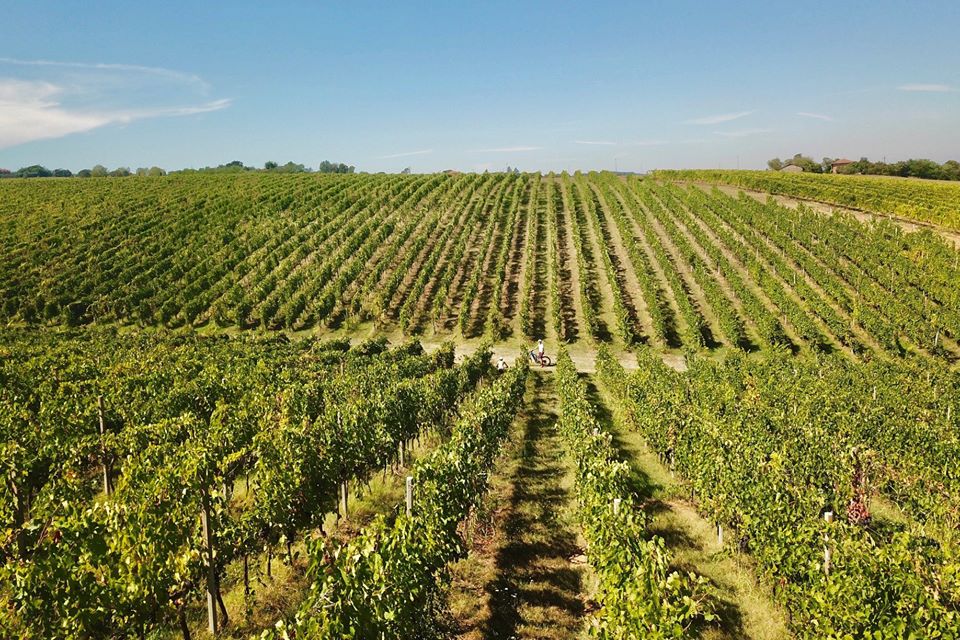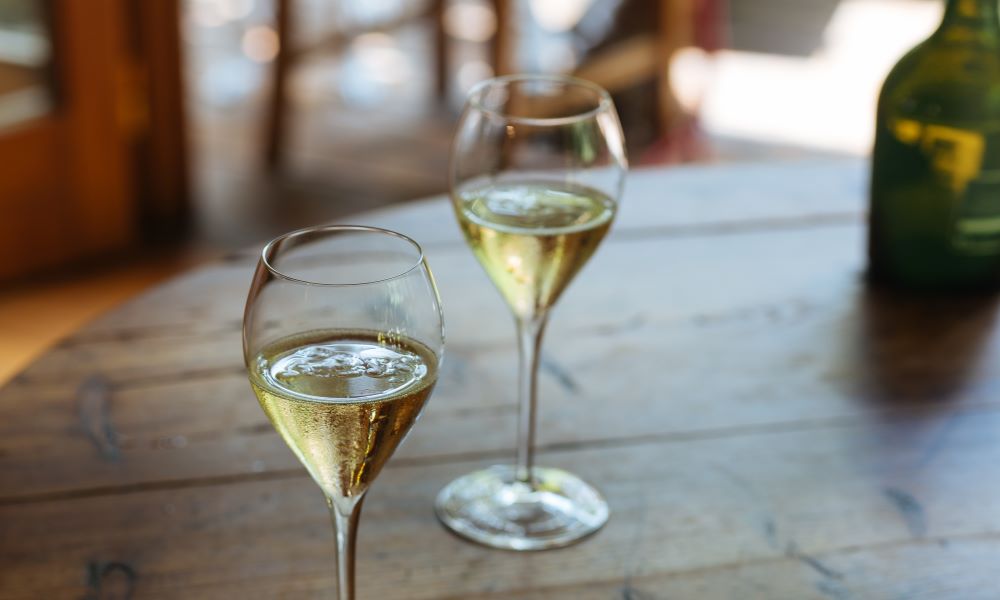Whether tasted during an aperitif or served with a traditional dish, Bologna’s typical wines are very appreciated by connoisseurs and wine lovers in general. If you’re visiting the city, you cannot miss a glass of sparkling Pignoletto or a full-bodied red wine such as the Barbera. Have a look at our guide and learn more about the wines produced on Bologna’s hills then!
Wine has been produced in Bologna since the Etruscan age (9th-6th century BC). Archaeological evidence has proved that olive trees and vineyards were cultivated on the southwestern hills of the city centuries before the arrival of Romans. Once conquered the city of Bononia, the latter went on strengthening the wine tradition of their predecessors.
It’s not by chance that Pignoletto, Barbera and other typical wines of the area were produced (and still are) on the hills, within an elevation between 500 and 600 metres. On the slopes from Monteveglio southwards to Monterenzio, vineyards are cultivated on many different terrains: from the most sandy to the most clayish, among ravines and tuffs. That’s why wines can be very different one from the other in terms of taste and scents. Yet, they all belong to the landscape of the Apennine foothills, that ranges from the gentle and colourful agricultural fields to the harsh landscape of ravines.

Today, in the wine list of Bolognese restaurants and taverns there’s always a bottle of white Pignoletto, in its sparkling, still and spumante versions, but also the reds Cabernet, Sauvignon, Barbera and Merlot. This short list is enough to understand that on the hills there are both native and international vineyards (else called non-native), such as Chardonnay, Riesling and Cabernet Sauvignon which have found in this area a fertile ground to grow.
The best place to taste a glass of wine are the typical Bolognese taverns, which we’ve already told you about. Alternatively, you can join our wine tour of Bologna by bike, which also includes two wine tastings.
Let’s now see the 4 DOC wines in details – Pignoletto, Cabernet Sauvignon, Barbera, Merlot – which are the most popular and well-known in Bologna, and discover their features and main food matching.
Pignoletto is a DOCG wine which originates on Bologna’s hills – its name comes from a little village in the district of Monteveglio - and it’s produced by the native grapes of Grechetto Gentile, which is also locally known as Alionzina. When talking about Pignoletto then, we talk about Bologna’s traditional viticulture, which dates back to the Roman time. According to some sources the origin of the name must be traced in the work Naturalis Historia by Pliny the Elder (77-78 AD) who mentioned a certain “Pino Lieto” wine, not so sweet and therefore not so tasty for him.
Nowadays, a light yellow nectar comes out of the bottles of Pignoletto, with alcohol content of 12° and a soft and aromatic fragrance. The taste is dry and slightly bitter in the end. We suggest you taste both the sparkling and the still version (for instance Pignoletto Classico Superiore), as well as spumante.

The colour of this sparkling red wine is an intense ruby red; its alcoholic strength is 11.5°, with a strong and dry taste; its body perfectly matches with second courses such as boiled meat, grilled meat and game, better if the wine is aged. Besides the sparkling one, there’s also a still version of the Barbera.
Also Cabernet Sauvignon is a perfect match with meat courses, such as game, braised meat and red meat in general. This red was “transplanted” on Bologna’s hills some decades ago and it’s now considered an almost native wine, like Merlot. Its alcohol content is of 12° and the aroma is intense, with an herbal and earthy note.
To conclude, let’s talk about Merlot. This wine goes hand in hand with the typical Bolognese menu, for instance cold cuts and lasagne, tagliatelle and boiled meat. We could define it a passe-partout wine, featuring a ruby red colour with violet hues, an harmonious and warm taste, and an alcoholic content of 11°.
Wine has been produced in Bologna since the Etruscan age (9th-6th century BC). Archaeological evidence has proved that olive trees and vineyards were cultivated on the southwestern hills of the city centuries before the arrival of Romans. Once conquered the city of Bononia, the latter went on strengthening the wine tradition of their predecessors.
It’s not by chance that Pignoletto, Barbera and other typical wines of the area were produced (and still are) on the hills, within an elevation between 500 and 600 metres. On the slopes from Monteveglio southwards to Monterenzio, vineyards are cultivated on many different terrains: from the most sandy to the most clayish, among ravines and tuffs. That’s why wines can be very different one from the other in terms of taste and scents. Yet, they all belong to the landscape of the Apennine foothills, that ranges from the gentle and colourful agricultural fields to the harsh landscape of ravines.

Which are the typical wines of the Bolognese hills?
Until some years ago, the answer was not so predictable. Outside the city, just a few people knew that, on top of being a city of outstanding culinary traditions, Bologna is also a great wine producer. Recently though, wine producers have multiplied and the fame of their wine labels is spreading both on a national and on an international level.Today, in the wine list of Bolognese restaurants and taverns there’s always a bottle of white Pignoletto, in its sparkling, still and spumante versions, but also the reds Cabernet, Sauvignon, Barbera and Merlot. This short list is enough to understand that on the hills there are both native and international vineyards (else called non-native), such as Chardonnay, Riesling and Cabernet Sauvignon which have found in this area a fertile ground to grow.
The best place to taste a glass of wine are the typical Bolognese taverns, which we’ve already told you about. Alternatively, you can join our wine tour of Bologna by bike, which also includes two wine tastings.
Let’s now see the 4 DOC wines in details – Pignoletto, Cabernet Sauvignon, Barbera, Merlot – which are the most popular and well-known in Bologna, and discover their features and main food matching.
Pignoletto, the king of Bologna’s wines…
…and of aperitifs in good company! This sparkling wine, being fresh, is perfect for a toast before dinner and some appetizers, but it’s also a good match with main courses, such as the typical tortellini in broth and the local fried bread called crescentine.Pignoletto is a DOCG wine which originates on Bologna’s hills – its name comes from a little village in the district of Monteveglio - and it’s produced by the native grapes of Grechetto Gentile, which is also locally known as Alionzina. When talking about Pignoletto then, we talk about Bologna’s traditional viticulture, which dates back to the Roman time. According to some sources the origin of the name must be traced in the work Naturalis Historia by Pliny the Elder (77-78 AD) who mentioned a certain “Pino Lieto” wine, not so sweet and therefore not so tasty for him.
Nowadays, a light yellow nectar comes out of the bottles of Pignoletto, with alcohol content of 12° and a soft and aromatic fragrance. The taste is dry and slightly bitter in the end. We suggest you taste both the sparkling and the still version (for instance Pignoletto Classico Superiore), as well as spumante.

Cabernet Sauvignon, Merlot and Barbera
Among the DOC red wines of Bologna’s hills, Barbera is considered to be an historic wine. Native to Piedmont region, the Barbera grapes have found a perfect environment in Bologna’s district as well, and now produce one of the most representative wines of the area.The colour of this sparkling red wine is an intense ruby red; its alcoholic strength is 11.5°, with a strong and dry taste; its body perfectly matches with second courses such as boiled meat, grilled meat and game, better if the wine is aged. Besides the sparkling one, there’s also a still version of the Barbera.
Also Cabernet Sauvignon is a perfect match with meat courses, such as game, braised meat and red meat in general. This red was “transplanted” on Bologna’s hills some decades ago and it’s now considered an almost native wine, like Merlot. Its alcohol content is of 12° and the aroma is intense, with an herbal and earthy note.
To conclude, let’s talk about Merlot. This wine goes hand in hand with the typical Bolognese menu, for instance cold cuts and lasagne, tagliatelle and boiled meat. We could define it a passe-partout wine, featuring a ruby red colour with violet hues, an harmonious and warm taste, and an alcoholic content of 11°.

